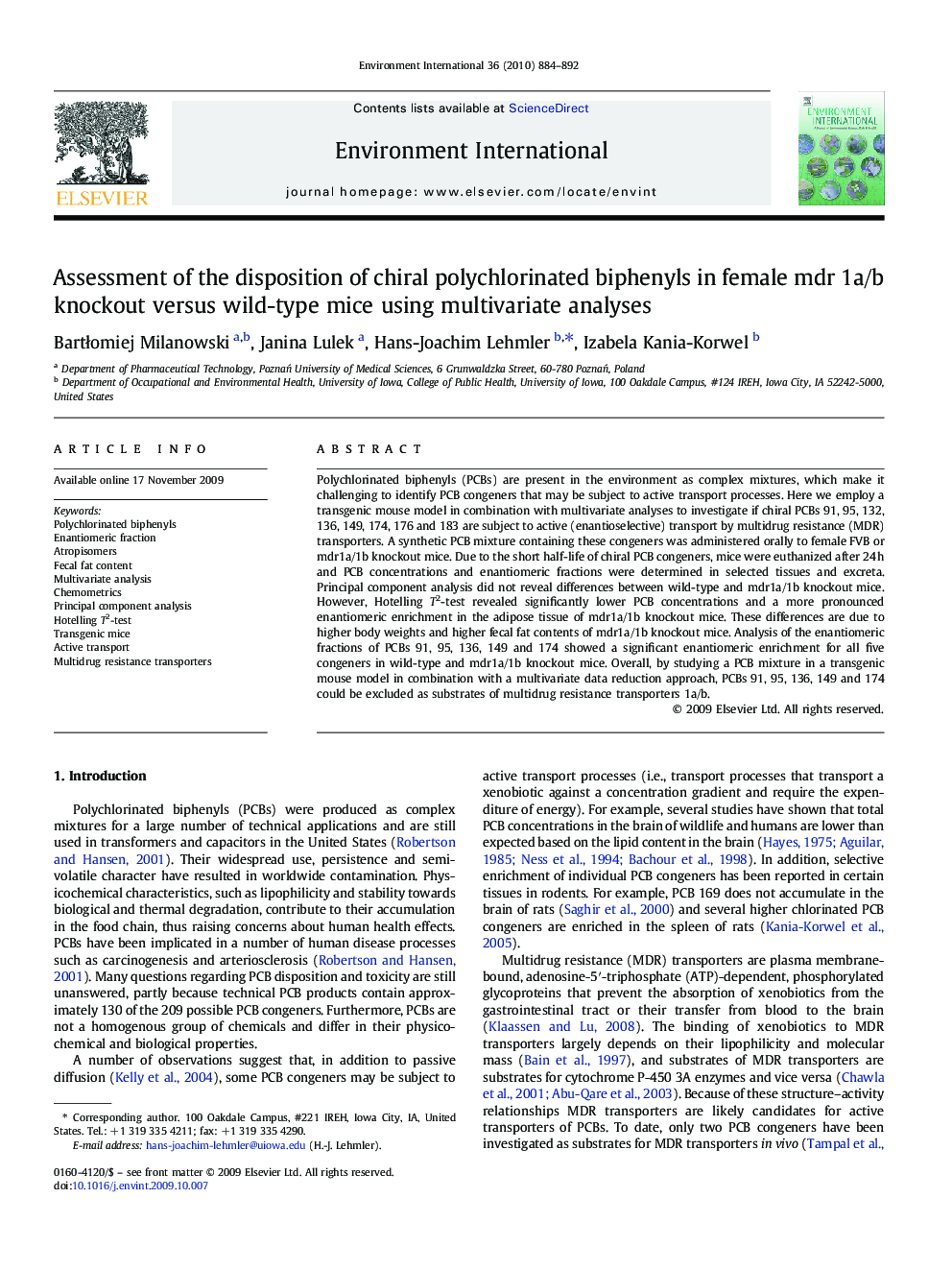| Article ID | Journal | Published Year | Pages | File Type |
|---|---|---|---|---|
| 4423204 | Environment International | 2010 | 9 Pages |
Polychlorinated biphenyls (PCBs) are present in the environment as complex mixtures, which make it challenging to identify PCB congeners that may be subject to active transport processes. Here we employ a transgenic mouse model in combination with multivariate analyses to investigate if chiral PCBs 91, 95, 132, 136, 149, 174, 176 and 183 are subject to active (enantioselective) transport by multidrug resistance (MDR) transporters. A synthetic PCB mixture containing these congeners was administered orally to female FVB or mdr1a/1b knockout mice. Due to the short half-life of chiral PCB congeners, mice were euthanized after 24 h and PCB concentrations and enantiomeric fractions were determined in selected tissues and excreta. Principal component analysis did not reveal differences between wild-type and mdr1a/1b knockout mice. However, Hotelling T2-test revealed significantly lower PCB concentrations and a more pronounced enantiomeric enrichment in the adipose tissue of mdr1a/1b knockout mice. These differences are due to higher body weights and higher fecal fat contents of mdr1a/1b knockout mice. Analysis of the enantiomeric fractions of PCBs 91, 95, 136, 149 and 174 showed a significant enantiomeric enrichment for all five congeners in wild-type and mdr1a/1b knockout mice. Overall, by studying a PCB mixture in a transgenic mouse model in combination with a multivariate data reduction approach, PCBs 91, 95, 136, 149 and 174 could be excluded as substrates of multidrug resistance transporters 1a/b.
